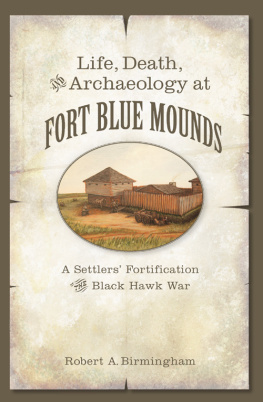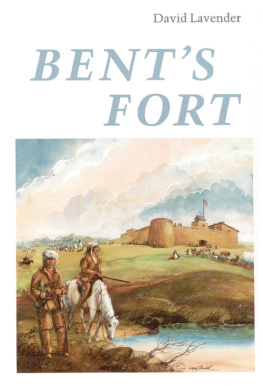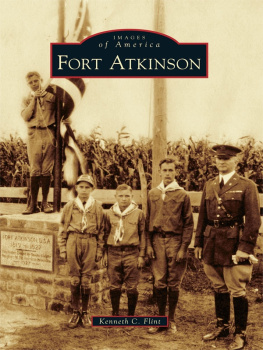
University Press of New England
www.upne.com
2014 University Press of New England
All rights reserved
For permission to reproduce any of the material in this book, contact Permissions, University Press of New England, One Court Street, Suite 250, Lebanon NH 03766; or visit www.upne.com
Library of Congress Cataloging-in-Publication Data
Starbuck, David R.
The legacy of Fort William Henry: resurrecting the past /
David R. Starbuck.
pages cm
Includes index.
ISBN 978-1-61168-547-3 (pbk.: alk. paper)
ISBN 978-1-61168-548-0 (ebook)
1. Fort William Henry (N.Y.) Antiquities. 2. Excavations (Archaeology) New York (State) Fort William Henry. 3. New York (State) History French and Indian War, 17541763 Antiquities. 4. United States History French and Indian War, 17541763 Antiquities. 5. Fort William Henry (N.Y.) Capture, 1757. I. Title.
E199.S785 2014
974.7'51 dc23 2013043809
Frontis, Face of Burial 14.
Courtesy of Anthony Reynolds.
CONTENTS
- APPENDIX 1
The Exhibits at Fort William Henry - APPENDIX 2
Foodways at Fort William Henry:
An Interim Progress Report, by Jene C. Romeo - APPENDIX 3
Major General Daniel Webbs Surrender Letter, August 17, 1757
PREFACE
What makes a fort great? What causes it to be remembered for hundreds of years? How can the events that occurred at a frontier fort change the course of a war and make it one of the signature events in American history? And how do we avoid all of the myths and fanciful stories that surround a famous historical event?
More than ten years ago I published Massacre at Fort William Henry (Starbuck 2002), an overview of the history and archeology of Americas early frontier fort at the southern end of Lake George, New York. So much has been learned since then that it is now time to tell a newer story of the fort, reporting on the archeological and forensic findings that are gradually changing our perceptions of events at this fascinating point of conflict between the British and French empires in America. The forts history has certainly not changed no new caches of historical documents have been found but the physical remains discovered at the ruins of Fort William Henry are most definitely changing the ways in which we view life at the fort prior to the massacre of 1757. This is very much an archeological story, to be told by those who have sifted through the remains of the fort and who have come to admire the men who served here so long ago.
This is also a local story for me because I grew up about twenty miles north of the modern village of Lake George. As a child I often visited the recreated fort, viewed the exhibits, enjoyed the guided tours, and purchased toy cannons in the gift shop. I was too young in 1953 and 1954 to be able to remember now whether I ever actually visited the archeological excavations at that time, but I am sure I never anticipated that one day I would be privileged to direct my own excavations both inside and outside the fort. I began digging through the ruins of Fort William Henry some sixteen years ago, and I would argue that I now have a nearly unique perspective on the soldiers and officers who served here, a personal bond with the forts defenders that is rich and deep. Digging in the dirt where soldiers fought and died has made Fort William Henry come alive for me as a three-dimensional adventure filled with mystery, sadness, and death.
I would like to thank the Fort William Henry Corporation, the State University of New York Adirondack, and Plymouth State University for sponsoring our field and laboratory work at Fort William Henry between 1997 and 2000, and again in 2011 and 2012. I am grateful to the Fort William Corporation for permission to use many of the images that are in their collections. Thanks are also due to well over 100 students, volunteers, and staff members who joined in the research. Although it is not possible to mention everyone who participated in our field crews over the years, these individuals have been an amazing group to work with, and they all deserve praise for helping to tell the story of this history making fort. There is always something new to be learned by digging in the ground!
I would especially like to thank the management and staff of the Fort William Henry Corporation for their many kindnesses throughout our work: Robert Flacke Sr., Kathy Muncil, Melodie Viele, Tom Cushing, Anne Hunter, Shawn Tuller, Mike Sabo, Suzanne Mills, Gerald Bradfield, Pam and Steve Collyer, Bruce Nelson, Robert Frasier, Rebecca Barrett, Mechylle Hammond, the late Dawn Littrell, Dan Donahue, and all of the other guides and interpreters at the fort. I would also like to thank Sarah Majot, who directed digs there in 2005; Carleton Dunn, who was first hired by the fort in 1953 and who continues to be a frequent source of invaluable information; and the board members of the French and Indian War Society: Fred Austin, Joseph Zarzynski, the late John Farrell, Jack Kokoletsos, John Strough, and Dale Erhardt. Our field supervisors on the summer digs have included the late John Farrell, Matthew Rozell, Brad Jarvis, Andy Farry, Gordon and Barbara DeAngelo, Lauren Sheridan, John Strough, John Kosek, Susan Winchell-Sweeney, Sarah van Ryckevorsel, Claudia Young, Judy Balyeat, Nia Alecksynas, and Justin Sturges. Their dedication and supervisory skills have been essential throughout our work.
In addition, I would like to thank those who worked in our summer field laboratories, especially Elizabeth Betty Hall, Merle Parsons, Maureen Kennedy, and June Talley. Together they oversaw the processing of many thousands of artifacts. Betty Hall has spent hundreds, perhaps thousands, of hours over many winters identifying the artifacts we uncovered and entering the information into a database on a computer, often assisted by Work Study students from Plymouth State University.
Dr. Victoria Bunker of Alton, New Hampshire, examined hundreds of prehistoric pottery sherds found at the fort, and her comments were most helpful. Timothy Todish of Grand Rapids, Michigan, and George Bray of Rochester, New York, have been a wonderful source of historical information for all things pertaining to the French and Indian War. And James Richardson III of the Carnegie Museum of Natural History provided some fascinating insights into his own excavations at the fort in the 1950s.
I am grateful to Karen T. Taylor, a forensic specialist who operates her business, Facial Images, in Austin, Texas. It was she who assessed the skull of Burial 14 and developed frontal and lateral drawings based on her morphological observations and experience in forensic identification cases. Taylor incorporated the anthropological findings of Dr. Kate Spradley and Dr. Michelle Hamilton from the Forensic Anthropology Center at Texas State University. Based on Taylors reconstruction drawings, Tony Reynolds then converted her images to 3D digital form. Their reconstructions of the face of Burial 14 are a very significant contribution to this book.
I owe special thanks to Jene Romeo for contributing to this book. Jene has studied the animal bones recovered from the fort over several years, and her work will form the basis of her doctoral dissertation.
Finally, I would like to thank the thousands of visitors to our excavations who have shared their ideas, their interpretations, and their enthusiasm for our archeological findings. Having an appreciative audience always makes the work go better. When Massacre at Fort William Henry was published in 2002, I was approached in the parking lot at the fort by a total stranger, who asked me, Is your book politically correct? I wont buy it if it is. I assured him that it was not, wondering, of course, whether he feared that I might be one of those who have made too many revisions to traditional American history. But this is a warning to every author. We must tell the story of politically charged events as honestly as possible, in this case presenting French, Native American, and British actions in an evenhanded way. The historiography of Fort William Henry is most fascinating, with every generation telling the story in new ways that reflect the political, racial, and moral attitudes of the moment. There is no hidden truth waiting to be discovered at this fort. Rather, there are many points of view, and I believe that my role is to add an archeological perspective to the dialogue, teasing insights from the soil where soldiers fought and died so many years ago.
Next page






